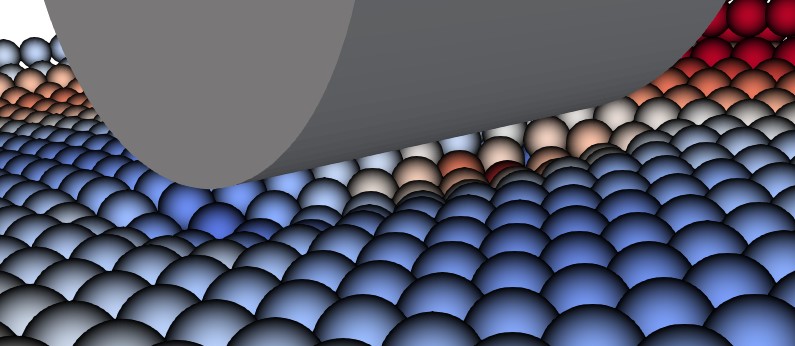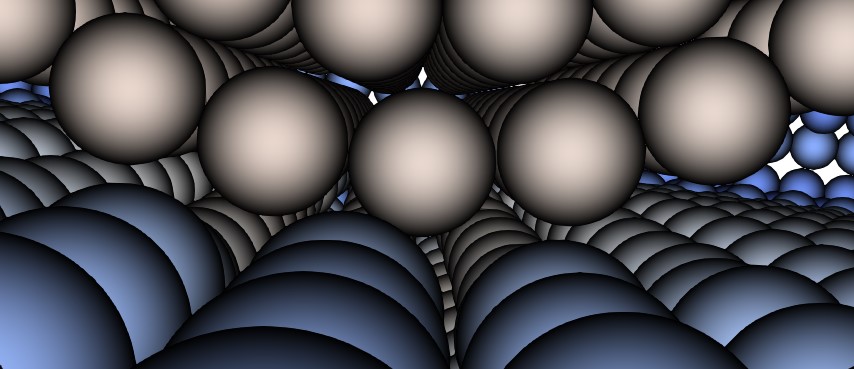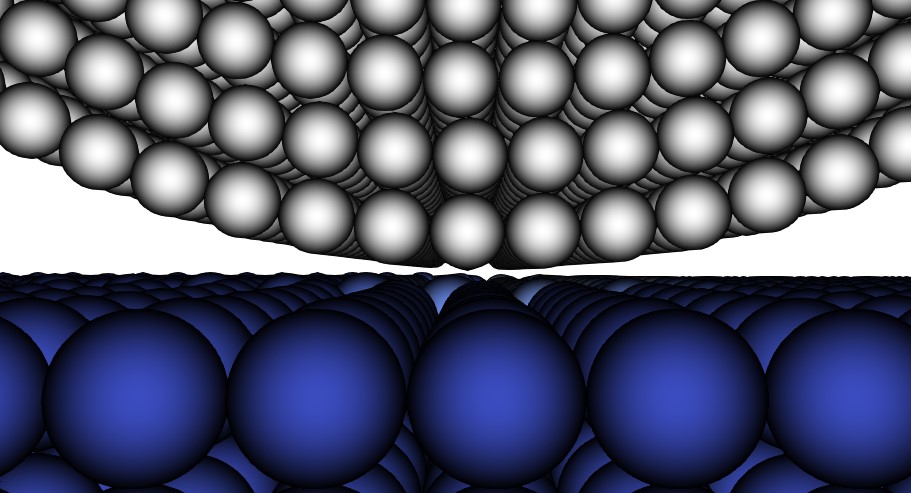problem with cylinder model
Chiny Lan
Hi, I try to using a cylinder as wheel to do single wheel test based on the demo_FSI_SingleWheelTest. But the cylinder interact with the particles as if the radius of the cylinder becomes larger. There is always a gap between the cylinder and the particle.
Then I test the demo_FSI_CylinderDrop using WCSPH json. It shows similar behaviors.

Radu Serban
This is because the actual representation of the cylinder as far as interaction with the soil phase is concerned is a collection of so-called BCE markers (of the same “radius” as the SPH particles) that are arranged in several layers *on* and below the cylinder surface. To get a visualization that corresponds to the actual simulation, you could either:
- Change the visual appearance of the cylinder to that collection of BCE markers.
- Inflate the radius of the visualization cylinder by the radius of an SPH particle.
--Radu

--
You received this message because you are subscribed to the Google Groups "ProjectChrono" group.
To unsubscribe from this group and stop receiving emails from it, send an email to
projectchron...@googlegroups.com.
To view this discussion on the web visit
https://groups.google.com/d/msgid/projectchrono/be39abc5-8ec9-4eba-931a-836bf9607121n%40googlegroups.com.
Chiny Lan
Radu Serban
You may want to read a bit more on SPH. The particles in SPH are *NOT* the same as particles in granular material. The problem is solved as a continuum with a meshless methos (SPH here) with is a Lagrangian particle-based method.
As such:
- it makes no sense to have particles “of random radius and position”
- for a proper coupling of the two phases, the BCE markers must be similar to the SPH particles (read up on phase coupling with such Boundary Constraint Enforcing markers). You can reduce initial spacing for SPH particles and BCE markers simultaneously.
But maybe you are interested in doing actual granular dynamics? In that case, you should look at the Chrono::Multicore and Chrono::GPU modules. For those, there are indeed functions that allow initialization of the granular materials with different statistics for mixtures and various space samplers (including a Poisson disk sampler) to provide the initial particle positions.
--Radu
From: projec...@googlegroups.com <projec...@googlegroups.com>
On Behalf Of Chiny Lan
Sent: Friday, 30 December 2022 12:29
To: ProjectChrono <projec...@googlegroups.com>
Subject: Re: [chrono] problem with cylinder model
Oh, I really works. Thanks!
Can I change the size of BCE markers so that they are not the same size as SPH particles?
Moreover, If there is some method to fill the SPH granular terrain with particles of random radius and positon?
在2022年12月30日星期五 UTC+8 16:33:31<Radu Serban> 写道:
This is because the actual representation of the cylinder as far as interaction with the soil phase is concerned is a collection of so-called BCE markers (of the same “radius” as the SPH particles) that are arranged in several layers *on* and below the cylinder surface. To get a visualization that corresponds to the actual simulation, you could either:
- Change the visual appearance of the cylinder to that collection of BCE markers.
- Inflate the radius of the visualization cylinder by the radius of an SPH particle.
--Radu
From: projec...@googlegroups.com <projec...@googlegroups.com> On Behalf Of Chiny Lan
Sent: Friday, 30 December 2022 09:22
To: ProjectChrono <projec...@googlegroups.com>
Subject: [chrono] problem with cylinder model
Hi, I try to using a cylinder as wheel to do single wheel test based on the demo_FSI_SingleWheelTest. But the cylinder interact with the particles as if the radius of the cylinder becomes larger. There is always a gap between the cylinder and the particle.
Then I test the demo_FSI_CylinderDrop using WCSPH json. It shows similar behaviors.
--
You received this message because you are subscribed to the Google Groups "ProjectChrono" group.
To unsubscribe from this group and stop receiving emails from it, send an email to projectchron...@googlegroups.com.
To view this discussion on the web visit https://groups.google.com/d/msgid/projectchrono/be39abc5-8ec9-4eba-931a-836bf9607121n%40googlegroups.com.
--
You received this message because you are subscribed to the Google Groups "ProjectChrono" group.
To unsubscribe from this group and stop receiving emails from it, send an email to
projectchron...@googlegroups.com.
To view this discussion on the web visit https://groups.google.com/d/msgid/projectchrono/d366a09b-5f57-4963-972a-ac2c732bec61n%40googlegroups.com.
Chiny Lan
Radu Serban
No need for excuses
😊!
I just wanted to point out that there are some fundamental differences between granular dynamics and the continuum representation using SPH. Take a look at https://sbel.wisc.edu/journal-papers/ where you
will find some papers that give details about the SPH-based continuum representation of terramechanics in Chrono.
--
You received this message because you are subscribed to the Google Groups "ProjectChrono" group.
To unsubscribe from this group and stop receiving emails from it, send an email to projectchron...@googlegroups.com.
To view this discussion on the web visit https://groups.google.com/d/msgid/projectchrono/be39abc5-8ec9-4eba-931a-836bf9607121n%40googlegroups.com.--
You received this message because you are subscribed to the Google Groups "ProjectChrono" group.
To unsubscribe from this group and stop receiving emails from it, send an email to projectchron...@googlegroups.com.To view this discussion on the web visit https://groups.google.com/d/msgid/projectchrono/d366a09b-5f57-4963-972a-ac2c732bec61n%40googlegroups.com.
--
You received this message because you are subscribed to the Google Groups "ProjectChrono" group.
To unsubscribe from this group and stop receiving emails from it, send an email to
projectchron...@googlegroups.com.
To view this discussion on the web visit https://groups.google.com/d/msgid/projectchrono/e4d4b057-ba07-4df5-826c-4f1305b15c32n%40googlegroups.com.
Chiny Lan


Wei Hu
To view this discussion on the web visit https://groups.google.com/d/msgid/projectchrono/e9fafa74-96cd-499d-98ca-5d84b219f2a8n%40googlegroups.com.


